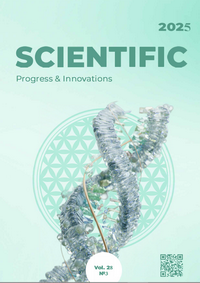Analytical evaluation of anesthesia regimens for dental diseases in dogs
DOI:
https://doi.org/10.31210/spi2025.28.03.38Keywords:
dogs, dental diseases, pain, narcosis, local anesthesia, diagnostics, treatmentAbstract
The aim of the conducted review was to comparatively evaluate the available clinical regimens for general and local anesthesia of dogs during dental procedures. Recent years have been marked by intensive research in the field of veterinary dentistry. Improving the existing and developing new methods for studying animals with diseases of the oral cavity and their treatment requires adequate analgesia. General anesthesia during diagnostic and therapeutic manipulations is one of the risk factors for animal death. Therefore, the currently proposed anesthetic regimens need to be improved. In clinical dental practice, a multi-modal approach to anesthesia is widespread, which involves the use of a combination of methods and preparations with different mechanisms of action to achieve the optimal analgesia while minimizing side effects. Planning anesthetic provision has to take into account that most diseases of the oral cavity are accompanied by pain. The optimal option for anesthesia, according to most researchers, is the combination of narcosis with conduction blocks. Among the systemic pharmacological agents, opioid analgesics are most often used: methadone, butorphanol, tramadol. A promising direction of anesthesia during dental manipulations in dogs is the use of nonsteroidal anti-inflammatory preparations (in particular, meloxicam) – in pre-medication regimens and maintaining of the appropriate level of anesthesia. A pronounced clinical effect was confirmed with conduction anesthesia with bupivacaine, lidocaine and their combination, which allows to extend the duration of their action. Conducting local anesthesia against the background of narcosis in most cases ensures adequate analgesia, but in some cases the blockade technique needs to be improved. Despite the low mortality rate of dogs (within 3 %), considerable attention of researchers is focused on determining the risk factors for animal death when using various anesthetic regimens. With a proven correlation of mortality risk with age, breed, type and duration of anesthesia, and the urgency of the manipulation, their mechanisms remain insufficiently studied. The prospect of further research is the clinical testing of modern local anesthetics and the study of the potential for their use in combination with the means of general anesthesia.
Downloads
Published
How to Cite
Issue
Section
License
Copyright (c) 2025 Scientific Progress & Innovations

This work is licensed under a Creative Commons Attribution 4.0 International License.

 Creative Commons Attribution 4.0 International Licens
Creative Commons Attribution 4.0 International Licens